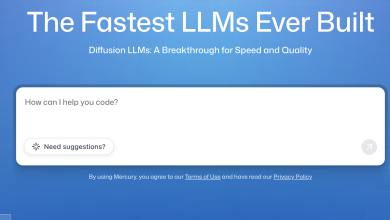
At Uniphore’s AI Leadership Summit in London this June, the centerpiece announcement was the debut of the Business AI Cloud — a sovereign, composable, and secure platform designed to bring together AI agents, orchestration, and flexible deployment models tailored to enterprise needs.
But beyond the brand messaging, the event revealed something more consequential: a tangible shift in how enterprise AI is being embedded into business workflows. Especially for large organizations operating under high compliance standards and complex infrastructure, the challenge has moved from experimentation to execution.
Rethinking Enterprise AI
For many enterprises, the challenge with AI adoption isn’t doubt — it’s disconnection. Business units often test isolated tools on their own, while vendors flood the market with narrowly focused solutions. Others offer so-called full platforms that, in reality, bind customers to fixed models, rigid architectures, and single-cloud deployments. The result is a patchwork of systems that limits flexibility, slows enterprise-wide rollout, and compounds integration and governance hurdles for IT leaders.
Uniphore’s Business AI Cloud aims to cut through that by organizing its platform into four interoperable layers:
- Data Layer: Connects and queries enterprise data wherever it lives — cloud, on-prem, or hybrid — without requiring duplication or migration.
- Knowledge Layer: Structures that data into usable knowledge, allowing AI to retrieve context-aware information securely and at scale.
- Model Layer: Enables enterprises to run models from Uniphore, OpenAI, Meta, and others — or fine-tune their own small language models (SLMs).
- Agentic Layer: Where users build, deploy, and orchestrate AI agents across workflows — from customer service to back-office automation.
“We’re not locking people into one model or forcing data migrations,” said Tushar Shah, Chief Product Officer at Uniphore. “We built this so enterprises can run AI how they need — securely, flexibly, and in line with how their teams already work.
A Demo That Moved Beyond Chat
One of the most talked-about moments at the summit was a live demonstration of how Uniphore’s platform could automate a full insurance claim workflow — a real-world scenario involving unstructured data, regulatory oversight, and high customer expectations.
A paper-based claim form, marked up with handwriting and checkboxes, was scanned by an AI agent. The system parsed the document, validated the details against internal policy data, detected a coverage inconsistency, and triggered a notification workflow for follow-up — all in under two minutes. Every step was logged, governed, and audit-ready.
“This is what enterprise AI should be doing,” said Saurabh Saxena, Head of Technology at Uniphore. “Reducing complexity, automating real work, and doing it safely.
Grounded in the Field, Not the Lab
Customer voices played a central role throughout the event. Leaders from companies like KPMG, Konecta, Adecco, and ResultsCX described how they’re using Uniphore’s platform across a range of functions — from customer service triage to compliance automation.
Each use case had its nuances, but the throughline was clear: enterprise buyers are no longer dazzled by generative AI novelty. They expect results — in operational efficiency, in workflow orchestration, and in measurable ROI.
“What we’re seeing now is less about the novelty of AI and more about the expectation that it integrates into the way business actually happens,” said one panelist.
Built for Control, Flexibility, and Scale
While still early in its global rollout, Uniphore’s Business AI Cloud has laid a strong architectural foundation. Designed with sovereignty, security, and composability at its core, the platform supports multilingual agents, on-premise and hybrid deployments, and the use of both open and closed-source models — offering CIOs a high degree of flexibility.
The platform’s ability to support SLMs is especially timely, as more organizations seek to fine-tune AI to their proprietary knowledge and domain-specific tasks without incurring the costs or risks of LLM overreach.
Industry Perspective: A Signal Shift in Enterprise AI
Enterprise AI isn’t about chat interfaces or clever pilots. It’s about reimagining how work happens across an organization — from front-line interactions to back-office operations — and embedding intelligence into every layer without introducing new risk or rigidity.
The Business AI Cloud reflects that ambition. Its design addresses the concerns CIOs are grappling with: how to bring AI into production without exposing sensitive data, being locked into proprietary architectures, or requiring wholesale IT overhauls. From multilingual and on-prem deployments to its support for small language models, the platform emphasizes flexibility where it matters most.
The real test will be usability. If Uniphore can make it easier for enterprises to build, govern, and scale AI agents — and integrate them without tearing down what already works — then it’s not just delivering a product. It positions itself at the center of how modern enterprises evolve.
In that sense, the Business AI Cloud isn’t just a platform launch — it’s a declaration of how AI should work in the enterprise: securely, flexibly, and in service of actual business outcomes.




